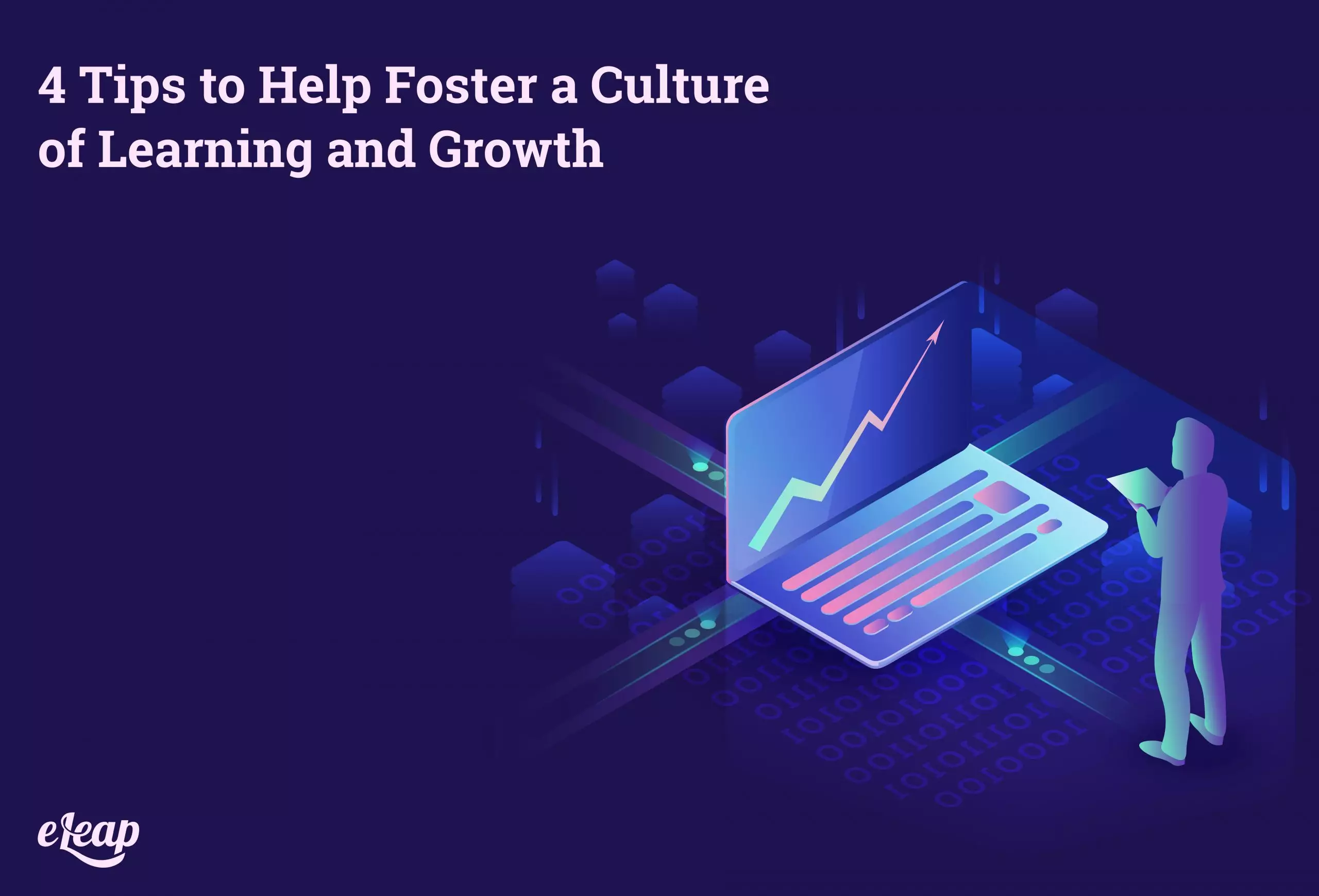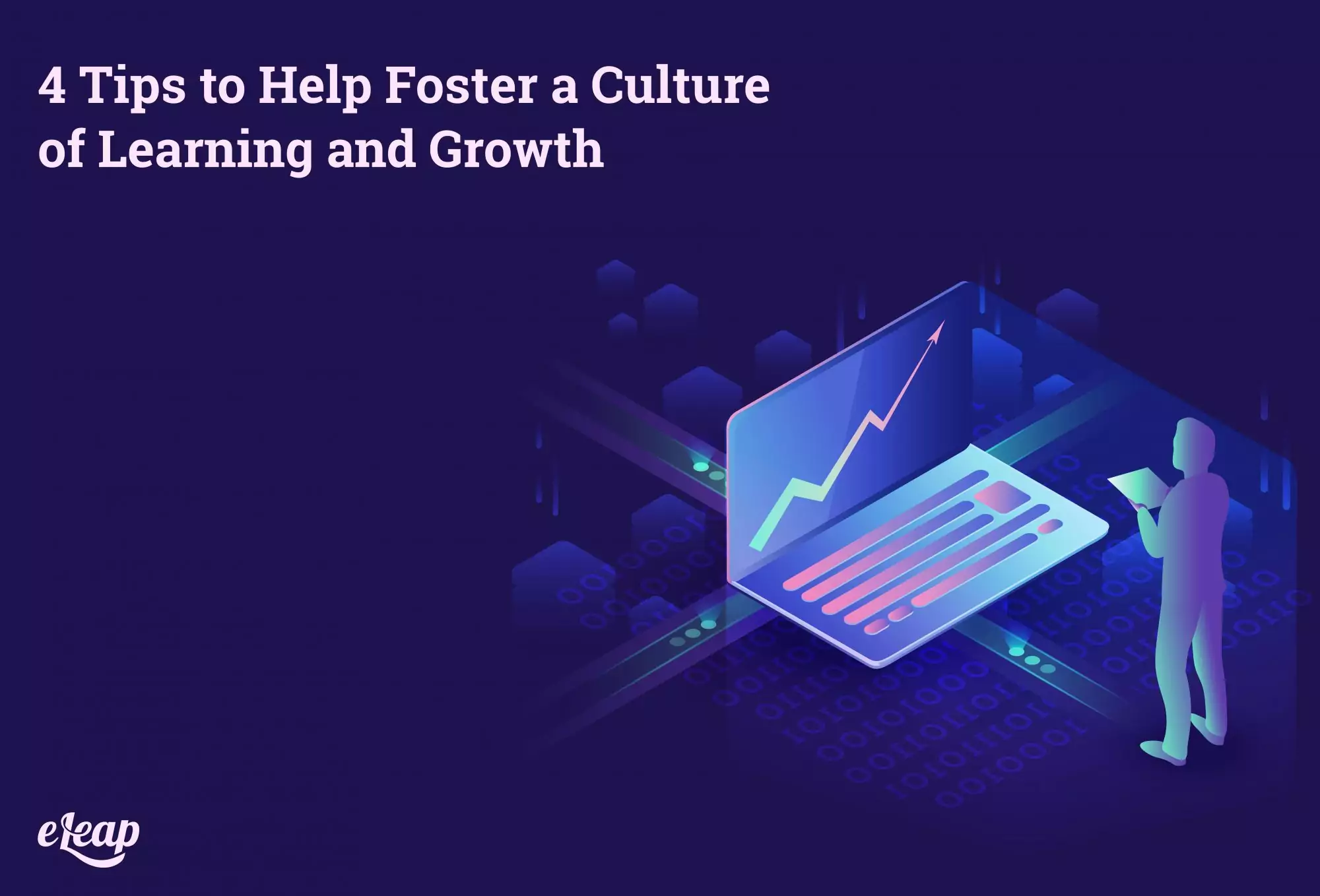4 Tips to Help Foster a Culture of Learning and Growth

What’s your company culture like? Is it still growing and evolving? Or has it started to stagnate? Does your company have a culture of learning?
Chances are good that you’re struggling with some degree of “culture fade”. It happens, even to the strongest of companies. However, that doesn’t mean that there’s nothing you can do about it.
Actually, creating and then maintaining a culture of learning and growth may be simpler than you think. In this post, we’ll cover four vital tips to help you out.

Make It Okay to Fail
First, understand that growth and learning don’t occur without the risk of failure. Too often, failure is seen in a negative light. It might involve wasted time and effort.
In an organization where experimentation is encouraged as part of the learning process, it could mean wasted resources. Don’t penalize failure. Encourage it.
Failure is a step along the path toward growth and learning. If there isn’t at least some degree of failure, then you’re not moving forward. You’re stagnating. You’re playing it safe, and you’ll eventually be left behind.
Make it okay to fail and you tell your teams that growth is encouraged, that learning is good, and that even if they don’t get it right the first time, it’s going to be all right.
Reward More Than Work Contributions
When you announce the employee of the month, chances are good that you’re judging based on things like productivity, efficiency, improved output, or something similar. You’re using business-focused criteria that ultimately speak to profit. There’s nothing wrong with that, but you should look beyond it and reward more than just workplace contributions.
For instance, consider rewarding the employee who has made the most progress in training and skills advancement. Recognize employees who are upskilling and making more of themselves. When you recognize learning and development efforts, as well as actions that drive business success, you help create a culture that values growth and learning.
Of course, doing this can be challenging. You’ll need the right LMS to enable tracking and monitoring. You’ll need an HR team that’s on the ball and fully understands the need to track development concerning rewards and recognition. All of that requires a unified strategy that’s implemented and communicated from the top down.
Focus on Helping One Another Reach Your Dreams
Really want to accelerate growth within your organization? Work on creating a culture where everyone supports one another’s dreams of success. It can radically transform any business, but how might this work?
You can go about it in any number of ways, but they all share some specific characteristics, including the following:
- Ask that employees share personal goals each year.
- Ask that employees share professional goals each year.
- Create a plan for management to help employees reach both personal and professional goals.
Growth is about pushing ourselves beyond our current capabilities. That applies to both the personal and professional aspects of our lives. Why should you invest time and other resources helping team members grow personally? Isn’t that what their off-time is for? If you take that view, then you’ll never change your company culture for the better.
Today, we need to focus on work-life synergy, rather than work-life balance. There is no longer a firm dividing line between our personal and professional worlds. If you want to become an employer of note and attract (and retain) top talent, then you need a culture that takes a holistic view and supports employees both personally and professionally.
Your learning management system can be a key step in that direction. With the right LMS, you can provide employees with plenty of opportunities for professional upskilling and development, but also with personal growth opportunities. You can easily create content tailored specifically to individual employees based on the personal and professional goals set during the annual meetings we just talked about.
However, you can’t leave it at an annual meeting. If you’re following modern performance management methodology (and you should be), then you know how critical it is to have regular check-ins with each employee. Combine learning and development with performance management and touch on course completion and progress during those check-ins.
This is all part of taking a holistic view of L&D. Your team members are complex human beings, and creating a culture that helps them reach both personal and professional goals improves retention, employee satisfaction, and engagement.
Encourage Curiosity
Creating a culture where learning and development are prized requires that employees stay curious. Removing the fear of failure is one step. Recognizing growth is another. Supporting employees in the development of both personal and professional dreams is a third. The fourth is to help them stay curious and let that curiosity drive their development.
Think of this as interest-led learning. Employees generally learn faster and retain more information about things they’re interested in. That doesn’t mean that mandatory corporate training goes out the window, but the ratio of mandatory and compliance training compared to interest-led learning should be low.
So, how do you encourage that curiosity? It’s not that difficult. Again, combine this with your check-ins. Focus on integrating L&D and performance management.
During your check-ins, ask about what your team members are experiencing. Ask what they would like to learn and how they would like to grow. Then ask how you can help support those efforts. When your team members feel supported, recognized, and trusted, they reward you with greater engagement, improved performance, and better retention.
A Culture of Learning and Success
In today’s world, organizations cannot afford to be solely focused on profitability and efficiency. You need to include the human element. It’s vital to use supportive management techniques and positive psychology to help connect the dots between employee development and achieving mission-critical goals and objectives for the organization as a whole. When you’re able to step back and say that employee development is the primary goal of your company culture, business development will follow.